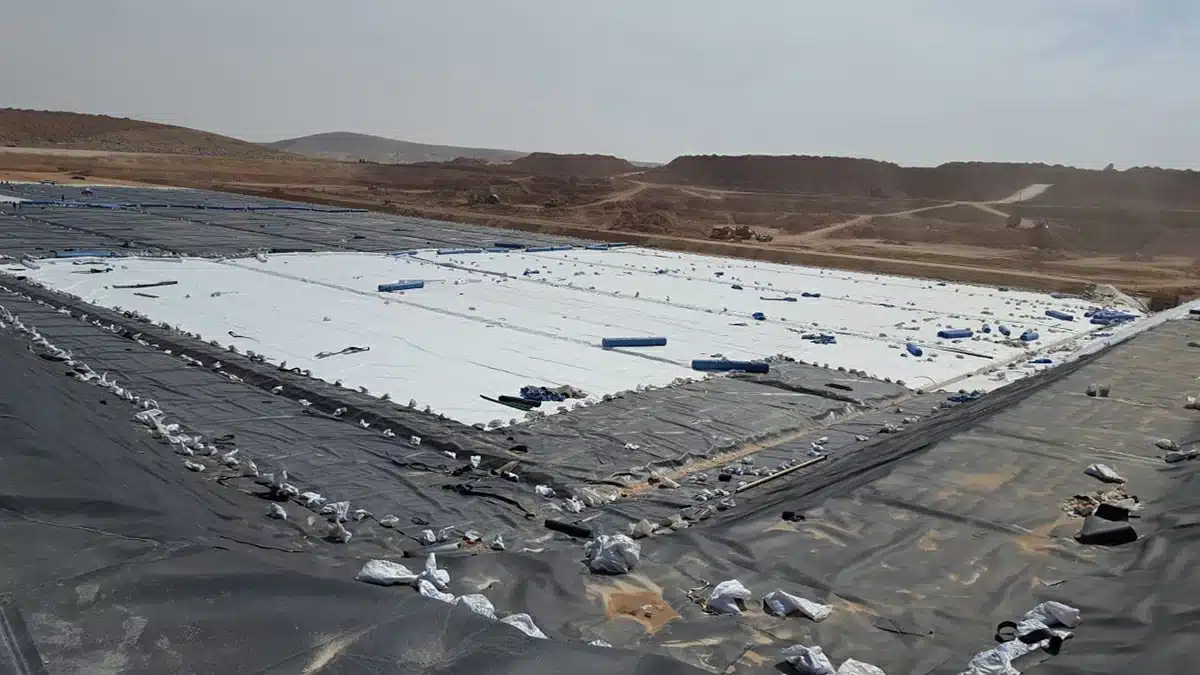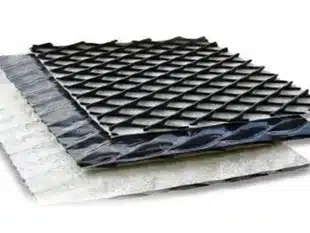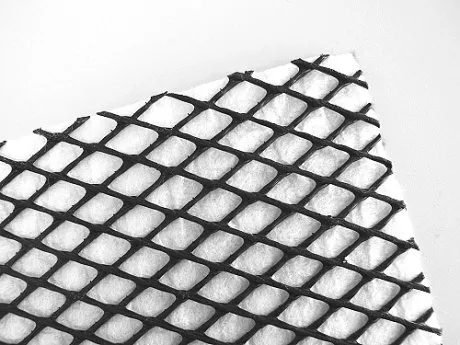+86-159 9860 6917
info@geofantex.com
geofantex@gmail.com
+86-400-8266163-44899
The field of civil engineering is continually advancing with innovative solutions aimed at enhancing efficiency and sustainability. Among these innovations, geocomposite drainage systems have emerged as a pivotal technology in managing water flow and soil stabilization in various construction and environmental projects. This article delves into the importance, functionality, and supply aspects of geocomposite drainage systems, providing essential insights into their role in modern infrastructure.

What is a Geocomposite Drainage System?
A Geocomposite Drainage System is a multi-layered product used in civil engineering and construction to manage water flow and drainage. Here is a detailed explanation:
Components
- Geotextile: This is a permeable fabric that filters soil particles while allowing water to pass through. It prevents clogging and ensures efficient drainage.
- Geonet or Geogrid: This provides the structural framework and primary drainage path. It is usually made from high-density polyethylene (HDPE) and has a high flow capacity.
- Geotextile Layers: These can be added to both sides of the geonet to enhance filtration and protection.
- Core Material: The core provides the primary drainage channel, supporting the structure and facilitating water movement.
Function
- Water Management: The primary function is to collect, transport, and discharge water from soil or structures, preventing water accumulation and related issues like erosion or structural damage.
- Filtration: The geotextile layers filter out soil particles, preventing the clogging of drainage paths.
- Protection: It protects the structural integrity of the drainage system by providing a stable pathway for water flow, reducing hydraulic pressure on structures.
Applications
- Landfills: Used to manage leachate by directing it to collection points, preventing contamination of surrounding soil and groundwater.
- Roads and Highways: Installed beneath pavements to prevent water accumulation, which can weaken the road structure and cause potholes.
- Retaining Walls: Ensures efficient drainage behind retaining walls, reducing hydrostatic pressure and preventing wall failure.
- Foundations and Basements: Helps in managing groundwater around building foundations, preventing water ingress and dampness.
- Sports Fields: Used to maintain optimal field conditions by efficiently draining excess water, preventing waterlogging, and ensuring usability.
Geocomposite Drainage Systems are essential in various construction and environmental projects for their efficiency, durability, and effectiveness in managing water flow and drainage.
How Do Geocomposite Drainage Systems Benefit Construction Projects?
Enhanced Drainage Efficiency:
- Optimal Water Flow: Geocomposite drainage systems are designed to facilitate the rapid removal of water, reducing water buildup and preventing potential structural damage.
- Consistent Performance: They maintain their drainage capabilities over time, ensuring consistent performance throughout the lifespan of the construction project.
Improved Stability:
- Soil Reinforcement: These systems help reinforce the soil, preventing erosion and maintaining the structural integrity of the construction site.
- Load Distribution: By evenly distributing loads, geocomposite drainage systems enhance the stability of the construction, reducing the risk of settlement and shifting.
Cost-Effectiveness:
- Reduced Maintenance Costs: The durability and efficiency of geocomposite drainage systems lead to lower maintenance costs over time.
- Minimized Construction Delays: By preventing water-related issues, these systems help avoid costly construction delays, contributing to overall project cost savings.
Longevity:
- Durable Materials: Made from high-quality, durable materials, geocomposite drainage systems have a long lifespan, providing lasting benefits to construction projects.
- Resistance to Degradation: They are resistant to chemical and biological degradation, ensuring their effectiveness for extended periods.
Environmental Impact:
- Sustainable Solution: Geocomposite drainage systems are often made from recycled materials, contributing to sustainable construction practices.
- Reduced Environmental Disruption: Their installation is less invasive compared to traditional drainage methods, minimizing environmental disruption and preserving natural habitats.

What Should One Consider When Choosing a Geocomposite Drainage System Supplier?
Selecting a reliable supplier for geocomposite drainage systems is crucial. Key factors to consider include the range of products offered, compliance with industry standards, and the technical support available. It is also important to evaluate the supplier’s reputation for quality and service, as well as their capacity to provide consistent supply and logistical support. Additionally, working with suppliers who invest in innovation and sustainability can ensure that the most advanced and environmentally friendly solutions are available for your project.
What Future Trends Are Expected in the Geocomposite Drainage System Market?
The future of geocomposite drainage systems looks promising with several trends poised to influence their development. There is a growing emphasis on sustainable and green construction practices, which will likely drive innovations in eco-friendly materials and recycling technologies within the geocomposite industry. Advances in manufacturing technology may also lead to more efficient and cost-effective production processes. Furthermore, as global infrastructure demands increase, the need for durable and adaptable drainage solutions will drive continued growth and innovation in the geocomposite market.
Geocomposite drainage systems are a key component in the evolution of modern infrastructure, offering a blend of efficiency, sustainability, and versatility. These systems not only address traditional drainage and stability challenges but also present a forward-looking solution that aligns with the global push toward greener construction practices. As the demand for more sophisticated and environmentally conscious construction materials grows, the supply and development of geocomposite drainage systems are set to expand, reflecting their critical role in shaping future landscapes.



Get Free Sample
We’ll respond as soon as possible(within 12 hours)






















